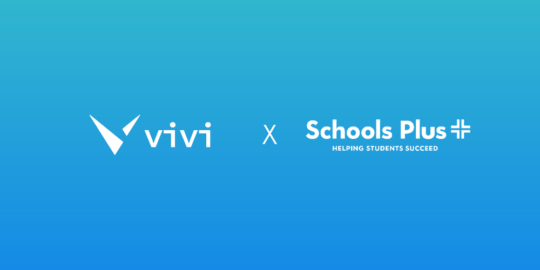
When St Francis Xavier College’s Director of Digital Learning, Phillip Sakellaridis, read a Vivi customer story on LinkedIn, he reached out with an invitation to the school’s brand new Flexible Learning Area, “the Beehive”, stating the school was about to a release a new building with innovative design where each classroom has three Vivi-enabled displays.
St Francis Xavier College is a 7-12 Catholic co-educational school in Melbourne, Australia. With over 3,300 students across three campuses, Phillip takes great pride in leading the way in technology-driven social learning.
“When we started designing our new building, we designed it with technology in mind,” Phillip said. “We let our use of Vivi lead our decision making and reverse engineered how we could create the most collaborative learning environment possible.”
What does that look like?
- Every room has three displays, all Vivi-enabled.
- The new Flexible Learning Area is nicknamed the “the Beehive” because the classrooms are hexagonal – there is no front or back of the room. They don’t use projectors because they determine where the front of the room is, and they don’t want a front of the room.
- The teacher doesn’t have a desk, they have a lectern on wheels. The spacing of the student desks around the room was designed so teachers could be constantly mobile.
- Every classroom has two break-out areas: one with a fourth Vivi-enabled display for group sessions, and another (triangular-shaped, to accommodate the hexagonal main rooms) for smaller deep-work sessions.
- Each room is separated by a custom-made sliding whiteboard wall, allowing two separate rooms to quickly become one big room. When the walls are open, anywhere you stand you can see 5-7 displays.
- All the desks are on wheels and shaped to create many types of configurations.
- There is not a single visible cord in the building. Even when it’s filled with students, who use laptops that work off a full charge of a solid day’s learning.
- Every display is Vivi-enabled, with 72 total in the building. They are all used for digital and classroom signage when there isn’t a class in progress. Phillip says “if you don’t have Vivi everywhere you miss the opportunity to engage anywhere.”
- St Francis Xavier College is a Microsoft school – everything is done on OneNote, Teams, and Office 365.
- The lower floor of the building has a sensory room and a smaller workspace for students with special learning needs.
“Maintaining Vivi has really been effortless and in the context of what this new building cost to bring to life, and the type of experience we’re trying to create, it was actually a drop in the ocean. Whenever we design a new building, a key question is ‘where are the Vivis’ going to go?’. We’re currently redesigning multiple campuses – our senior campus classrooms for Wood Technology, Food Technology, Visual Communication – with every classroom designed to accommodate Vivi.
“An example in those classrooms is that a teacher records what they’re doing and live broadcasts it to every display in the room. Previously we had to use a big mirror or hover camera above the teacher and everyone would stand around the demonstration area.
“We rely so much on Vivi Central and having that central control dashboard. Every morning we quickly check that all the boxes are green, which gives my team and our teachers peace of mind that everything is ready for them. The rare occasion where we’ve had an issue with Vivi has often had nothing to do with the technology; it is because of the infrastructure, which we’re getting better at.
“The use of Vivi is driven by minimal training, it’s that easy to use we put more emphasis on the digital pedagogy that how the software works. We show them how to do it and they just know. Our teachers are becoming more mobile and engaging and we keep reminding them to push the boundaries of what they can do with Vivi. During our early days we made use of the Vivi stats with staff as a leader board but we had to stop because it was getting too competitive.
“Even little things like when they walk into a room, we have instructions of how they can configure the desks for the type of lesson they’re planning up on the Vivi-enabled displays. I’m big on doing things differently and we want to change how we do everything in the new building. Set up the room, allow chaos to happen, and then have the expertise to pull it back in. That’s where creativity thrives.
“In our math classes, it’s not unusual to have students at very different levels. Now we can personalise learning in real time and have every student share their screen so there’s full transparency. There are now a range of learning experiences in our flexible learning classrooms: presentation mode to collaboration mode to individual mode. All these opportunities depend on the configuration of room. Students prefer the flexibility of doing different things every day.
“If you’re using technology to change behavior, you’re going about it in the wrong way. It starts with building a relationship and trust.
“At a previous school we were one of the first to put iPads in classrooms in 2010 – Apple was sending busloads of people down to see how we were using them. We test everything. We’re not gambling on something, we’re investing in something. Vivi is like a renovation rescue for an old room, it automatically makes it more collaborative.”



